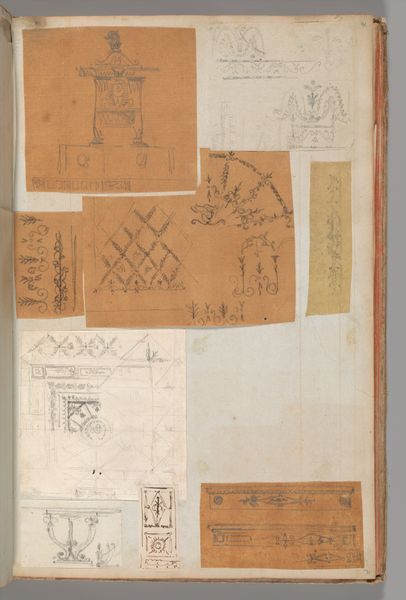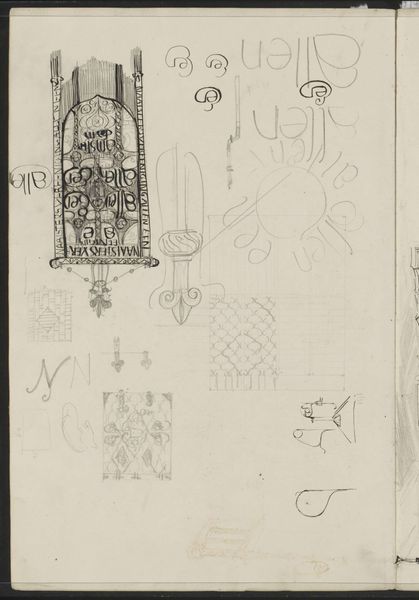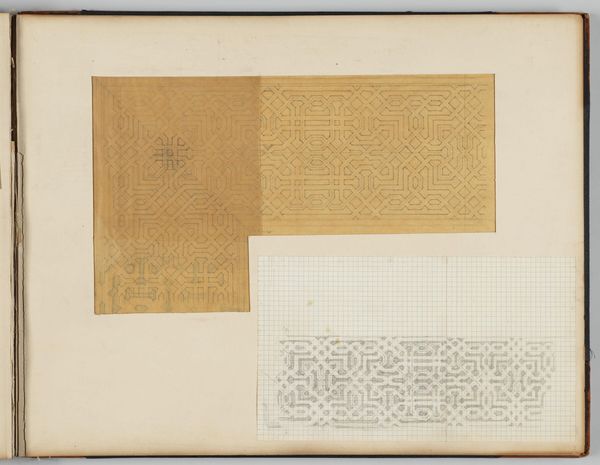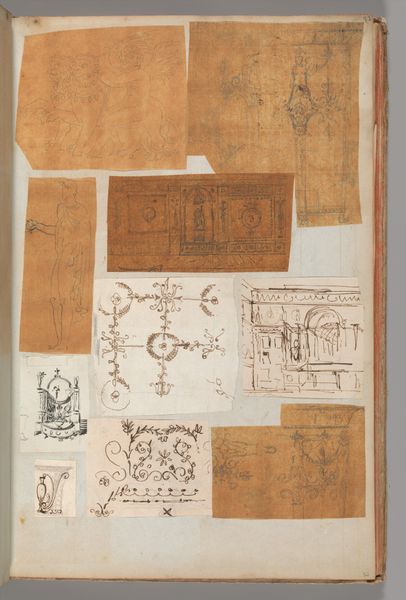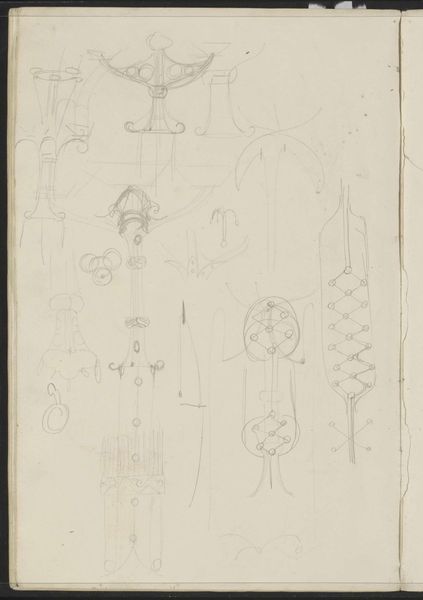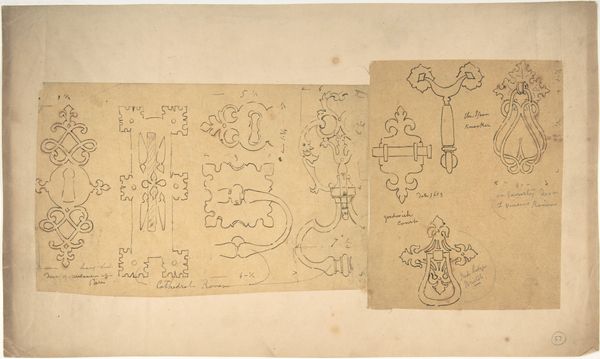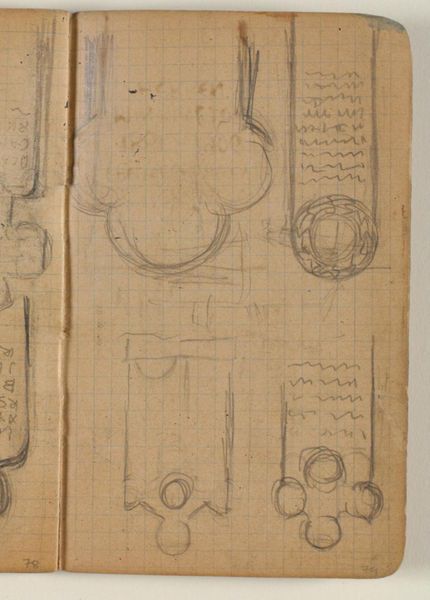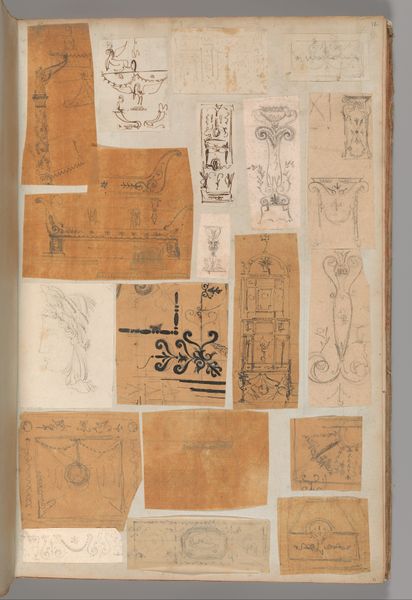
drawing, tempera, paper, watercolor, pencil
#
drawing
#
medieval
#
tempera
#
paper
#
watercolor
#
geometric
#
pencil
Copyright: Rijks Museum: Open Domain
Curator: Looking at this work titled "Ornamenten" by Pierre Joseph Hubert Cuypers, dating roughly from 1837 to 1921, currently housed in the Rijksmuseum, brings to mind medieval illuminated manuscripts and stained glass windows. Editor: It feels more like a technical drawing or an architect’s sketchbook page. It seems muted, like the colors have faded over time, doesn't it? Curator: Indeed. What strikes me are the various media employed - pencil underdrawing, with watercolor and tempera for color accents, all on paper. It speaks to a process, doesn't it? To the planning and the labour involved in creating these ornamental designs. Cuypers was a very prolific architect. Consider how drawings like these informed the craftmanship within large-scale Gothic Revival projects, where geometric designs found their expression in stone and glass. Editor: The fleurs-de-lis motif immediately evokes a sense of historical connection to French heraldry. Beyond that, though, what social currents were impacting Cuypers that led him to create these kinds of geometric, ornamental forms? I imagine, his work reflects some sort of romantic revival of earlier styles or philosophies about decoration, no? Curator: Exactly! There’s an explicit turn to the aesthetic values of the past, a romantic notion of what craftsmanship should be, which then gets filtered through his very hands in a commercialized design. How does the commodification impact design for the purpose of national identity formation through art, then? The materials and process contribute heavily. Paper becomes a vessel. Editor: Good question. And certainly, the political undertones shouldn't be disregarded. Think of this period within broader European political landscapes: nations consolidating, searching for historical legitimacy through visual cues, all filtered through institutions of artistic patronage, like churches. It begs the question of audience and reception; what would Cuypers have hoped to communicate through works like these? And were there other artists in the same institutional circles employing related designs or construction techniques? Curator: Fascinating, really. It offers a tangible glimpse into the methods that defined Cuypers' style. Editor: It certainly highlights how a drawing like this transcends the status of preliminary work to become an interesting art object itself.
Comments
No comments
Be the first to comment and join the conversation on the ultimate creative platform.
